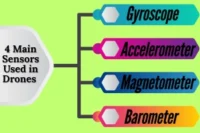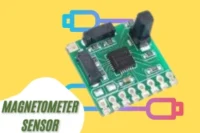How to Measure a Drone Frame the Right Way
Published: 17 Jul 2025
In the next few years, more drone users will realize that frame size affects everything from motor choice to battery life. If you are planning to build or upgrade a drone, knowing how to measure a drone frame will save you from costly mistakes. The wrong frame size can throw off your setup and lead to poor stability in the air. But don’t worry, it’s easier than you think. Whether you are into FPV flying or just starting out, we will show you simple steps to measure your frame correctly so your drone flies the way it should.
What Does Measuring a Drone Frame Mean
If you want your drone to fly right, you need the frame to match your parts perfectly. Measuring a drone frame means checking its size and shape so everything fits and works well together.
Frame Size (in millimeters): This is the distance from one motor to the opposite motor across the frame, usually measured diagonally. For example, a “250mm frame” means the diagonal motor-to-motor distance is 250mm.
Layout of the Frame: This tells you the shape of the frame like X-frame, H-frame, or Deadcat. It affects how your drone handles in the air and what type of flying it’s best for.
Mounting Hole Patterns: These are the small holes where motors and electronics are screwed in. You must measure them to make sure your motors or flight controllers fit without drilling extra holes.
Why It All Matters: A wrong measurement can throw off the balance, make your drone unstable, or cause the props to hit the arms. Just like wearing the wrong shoe size makes walking hard, the wrong frame size makes flying harder.
Tools You Will Need
Before you start measuring your drone frame, you will need a few simple tools. Most of these are easy to find at home, in a local store, or online. Having the right tools makes sure your measurements are accurate and your drone flies exactly how you want.
Ruler or Measuring Tape: A basic ruler or flexible measuring tape works great for quick measurements. Choose one with clear millimeter (mm) markings for better accuracy.
Digital Caliper : If you want really precise results, a digital caliper is your best friend. It helps measure small parts like mounting holes and arm thickness more accurately than a ruler.
Notebook or Phone for Notes: Always record your measurements. Keeping a log will help you later when you buy parts or rebuild your drone.
Tips for Getting Accurate Measurements
Measure on a Flat Surface: Always place your frame on a smooth, flat table or desk. It keeps the frame steady and prevents mistakes.
Always Double-Check Your Numbers: Take each measurement twice. A small error can cause a big problem later when you fit your motors, props, or battery.
Key Parts of the Frame to Measure
To make sure all your drone parts fit and work well together, you need to measure a few key areas of the frame. These measurements help you match motors, propellers, and electronics without any guesswork.
Motor-to-Motor Diagonal Distance
- This is the most important frame measurement.
- It’s the length from the center of one motor to the opposite motor (corner to corner).
- This size is what people mean when they say “250mm frame” or “450mm frame.”
- It helps decide what propeller size and motor power will work best.
Arm Length and Thickness
- Arm length affects how far the motors sit from the center. Longer arms support larger propellers.
- Arm thickness matters too. Thicker arms are stronger and more stable but add weight.
- If arms are not even or strong enough, the drone may shake or tilt during flight.
Center Plate Size
- This is the middle flat part of the frame where you place your electronics like the ESC, flight controller, and battery.
- Make sure there’s enough space to fit everything without stacking parts too high.
- A larger plate is helpful for clean wiring and better airflow.
Mounting Hole Pattern
- These are the tiny holes on each arm where motors are screwed in.
- Motors come with specific mounting patterns, like 16x16mm or 19x19mm.
- If your motor doesn’t match the hole spacing, it won’t fit so measure carefully.
How to Measure a Drone Frame
Measuring your drone frame is easier than you might think. You just need a few minutes, the right tools, and a little bit of care. Follow these simple steps to get accurate measurements that will make building or upgrading your drone much smoother.
Step 1: Place the Frame on a Flat Surface
- Set your frame on a clean, flat table or workbench.
- This keeps the frame steady and helps you measure more accurately.
- A wobbly surface can cause small mistakes that affect your final setup.
Step 2: Measure Diagonal Motor Distance
- Find the center of one motor mount and measure straight across to the center of the opposite motor mount.
- Always use millimeters (mm) for better precision since drone sizes are based on this unit.
- This number defines your frame size, like 250mm or 450mm.
Step 3: Measure Arm Length and Width
- Measure from the center of the frame out to where the motor will be mounted.
- Check the width of the arms too; thicker arms mean more strength but add weight.
- Consistent arm length and thickness are important for balanced flight.
Step 4: Check Mounting Hole Distances
- Use a digital caliper for more accurate readings on small mounting holes.
- Measure the distance between the holes where motors will be attached.
- Make sure these match the motor specifications, like 16x16mm or 19x19mm patterns.
Step 5: Record and Save Your Measurements
- Write down each measurement carefully in a notebook or your phone.
- You can also take clear photos of your frame with measurements marked.
- Keeping this information helps when ordering parts or upgrading later.
Conclusion
We have covered how to measure a drone frame in detail. I highly recommend measuring every part carefully before you buy anything. Trust me, it will save your money, time, and a lot of headaches. Whether it’s your first drone or your tenth, accurate frame measurements always lead to better builds. Now it’s your turn grab your frame, follow the steps, and start building with confidence.





